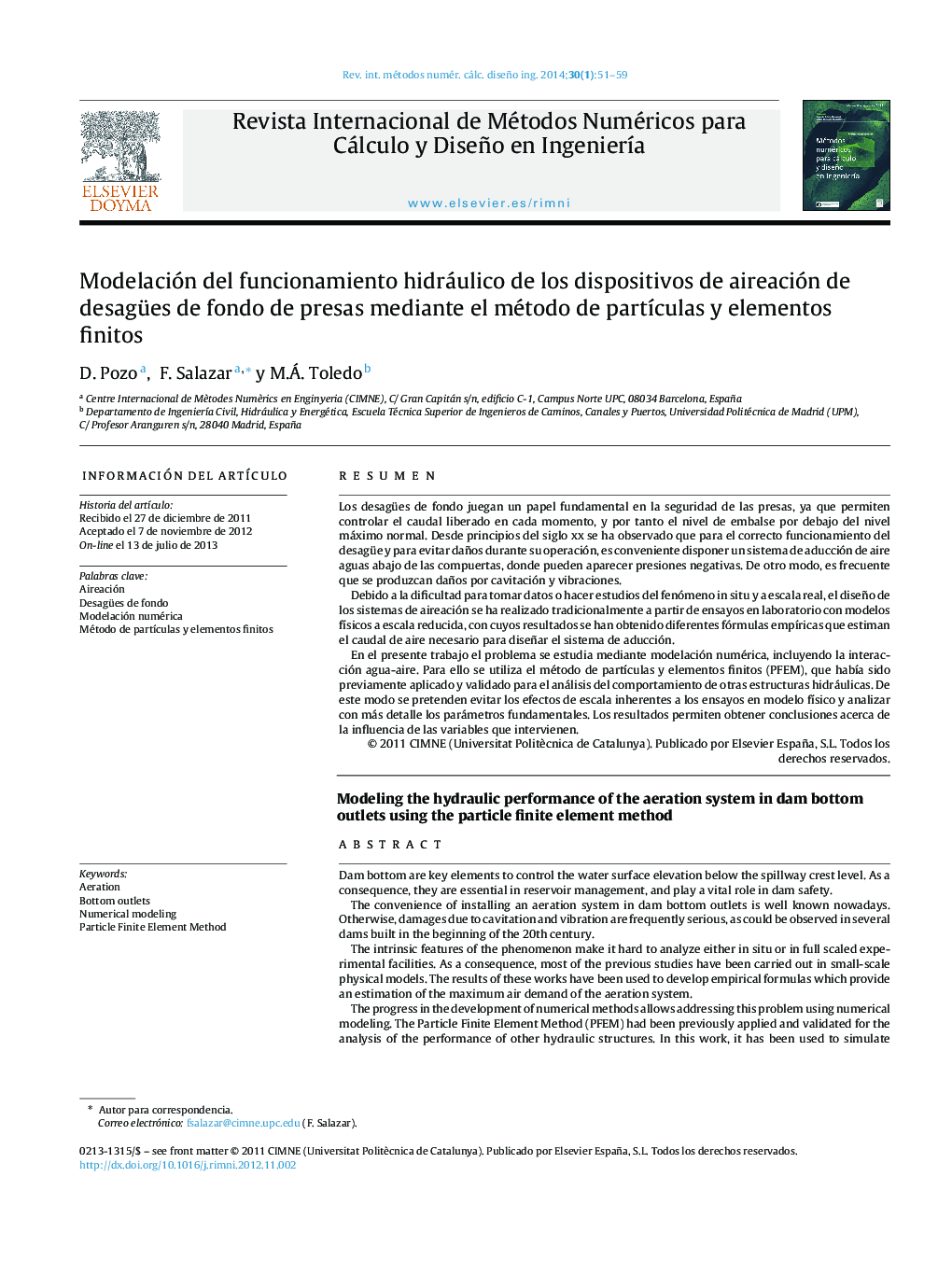| Article ID | Journal | Published Year | Pages | File Type |
|---|---|---|---|---|
| 1702598 | Revista Internacional de Métodos Numéricos para Cálculo y Diseño en Ingeniería | 2014 | 9 Pages |
ResumenLos desagües de fondo juegan un papel fundamental en la seguridad de las presas, ya que permiten controlar el caudal liberado en cada momento, y por tanto el nivel de embalse por debajo del nivel máximo normal. Desde principios del siglo xx se ha observado que para el correcto funcionamiento del desagüe y para evitar daños durante su operación, es conveniente disponer un sistema de aducción de aire aguas abajo de las compuertas, donde pueden aparecer presiones negativas. De otro modo, es frecuente que se produzcan daños por cavitación y vibraciones.Debido a la dificultad para tomar datos o hacer estudios del fenómeno in situ y a escala real, el diseño de los sistemas de aireación se ha realizado tradicionalmente a partir de ensayos en laboratorio con modelos físicos a escala reducida, con cuyos resultados se han obtenido diferentes fórmulas empíricas que estiman el caudal de aire necesario para diseñar el sistema de aducción.En el presente trabajo el problema se estudia mediante modelación numérica, incluyendo la interacción agua-aire. Para ello se utiliza el método de partículas y elementos finitos (PFEM), que había sido previamente aplicado y validado para el análisis del comportamiento de otras estructuras hidráulicas. De este modo se pretenden evitar los efectos de escala inherentes a los ensayos en modelo físico y analizar con más detalle los parámetros fundamentales. Los resultados permiten obtener conclusiones acerca de la influencia de las variables que intervienen.
Dam bottom are key elements to control the water surface elevation below the spillway crest level. As a consequence, they are essential in reservoir management, and play a vital role in dam safety.The convenience of installing an aeration system in dam bottom outlets is well known nowadays. Otherwise, damages due to cavitation and vibration are frequently serious, as could be observed in several dams built in the beginning of the 20th century.The intrinsic features of the phenomenon make it hard to analyze either in situ or in full scaled experimental facilities. As a consequence, most of the previous studies have been carried out in small-scale physical models. The results of these works have been used to develop empirical formulas which provide an estimation of the maximum air demand of the aeration system.The progress in the development of numerical methods allows addressing this problem using numerical modeling. The Particle Finite Element Method (PFEM) had been previously applied and validated for the analysis of the performance of other hydraulic structures. In this work, it has been used to simulate air-water interaction in free-flowing gated conduits. The objective is to avoid the scale effects of physical modeling and to study in detail the key parameters. The results clarify the behaviour of the involved fluids (air and water) and provide information about the influence of the main variables that affect their circulation.
